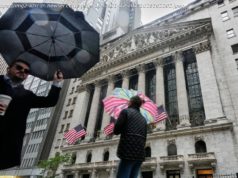U. S. Bancorp raised the prime rate to 4.25 percent following the Fed announcement to increase rates by a quarter point.
U. S. Bancorp was the first major bank that announced Wednesday that it would increase its prime lending rate to 4.25 percent from 4 percent, effective Thursday.
The policy-making Federal Open Market Committee on Wednesday increased its benchmark target rate for the third time in six months amid expectations that inflation is running well below the central bank’s target.
The prime rate is the rate at which banks lend to creditworthy customers, and often is used as a benchmark for other loans such as loans for credit cards or small businesses.
As financial markets had anticipated, the FOMC increased its benchmark target a quarter point. The new range will be 1 percent to 1.25 percent for a rate that currently is 0.91 percent.
The Federal Reserve does not directly influence the prime rate, but prime rates tend to closely correlate with changes in rates announced by the central bank.
While the Fed’s interest rate has limited influence on other typical loans like auto loans or college tuition, the increased interest rate directly influences short-term borrowing costs for banks. An increase in short-term borrowing costs can lead to banks slightly increasing other rates such as credit cards, home equity loans and credit lines.
— CNBC’s Jeff Cox contributed to this report






